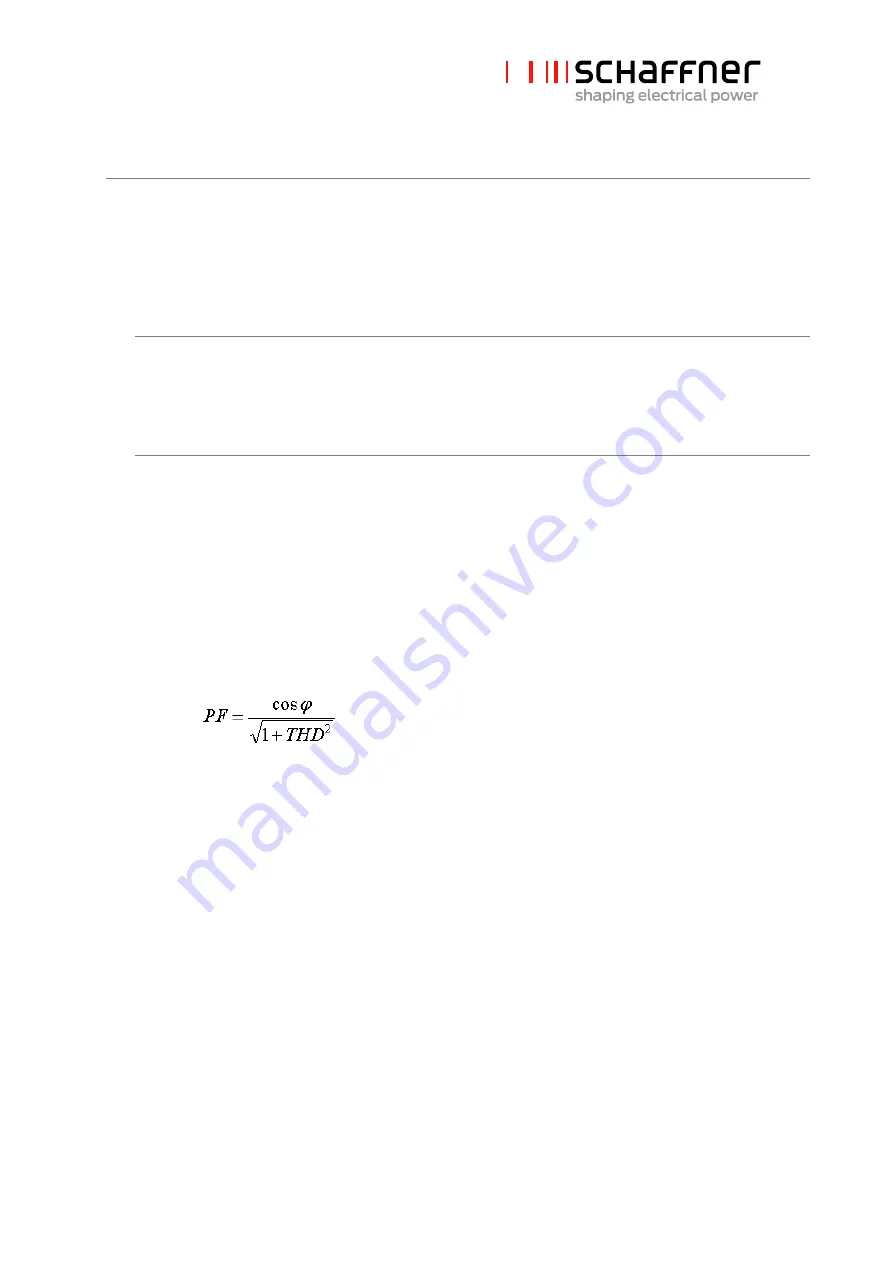
Schaffner Group
User and Installation Manual
Ecosine FS42842
34/43
22
FAQ – Frequently asked questions
Q:
Why are ecosine
®
harmonic filters CE-marked, but Schaffner EMI filters are not?
A:
EMI filters and other passive components must not be CE-marked according to the low-voltage
directive because they are not sold to the public as an individual device with an independent
function. They are usually part of equipment, which in turn has to be CE-marked as a whole. This
is different with e.g. a transformer or a harmonic filter. ecosine
®
can be sold as an individual
aftermarket product that will not necessarily be built into another CE-conform piece of equipment.
As a “stand-alone unit”, it must be CE-marked in order to be distributed throughout Europe.
Q.
Can ecosine
®
filters be used for a single-phase load or just be connected to two phases?
A:
This mode of operation is not possible. ecosine
®
filters are optimized for balanced three-phase
power systems with six-pulse rectifier front ends and their performance depends upon voltage
distortion and phase unbalance. Schaffner is experienced in custom harmonic filter design and can
potentially come up with a single-phase solution to your requirement.
Q:
How are ecosine
®
harmonic filters contributing to financial savings? Are they reducing my
electricity bill?
A:
ecosine
®
harmonic filters help to save long term system operating cost and help to avoid
expensive system/production downtime. There are two different aspects to answer this question:
1. Most likely, the installation of ecosine
®
filters will not result in a lower electricity bill. ecosine
®
harmonic filters substantially reduce reactive current and thus reactive power in the
system. However, most utility companies invoice only the consumption of real power,
which will not be changed with the installation of ecosine
™. Some utilities may issue
penalties for consumers with low power factor (usually <0.9). Low power factor can be
caused by phase shift of the fundamental current (low cos phi) and/or by harmonics of the
current (high THID) as it is described by the following formula:
For nonlinear loads (like six-pulse rectifiers) value of cos phi is high (close to 1) and the
main reason for a reduced power factor is a high value of THID. The installation of
ecosine
™ filters would increase the power factor and help to avoid utility penalties, i.e.
get into a less expensive rate class. These penalty schemes are different from country to
country and from utility company to utility company.
2. Electric systems with significant non-linear loads have high levels of harmonic current
distortion and consequently also bad voltage quality. Both can have significant negative
effects, such as:
Transformers
▪
Increased audible noise
▪
Increase in copper losses (due to current harmonics)
▪
Increase in iron losses (due to voltage harmonics)
Power installation with capacitive power factor compensators
▪
Risk of resonance and resulting damage of capacitor banks

























